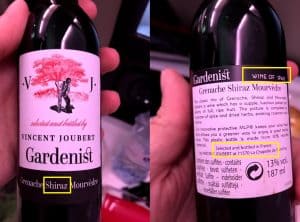As a wine student, I’m always knee-deep in terroir. Working through the WSET Diploma, the enduring question that runs through every wine is: Why are you the way you are?

The TL;DR answer is usually “Terroir”-that vague French word which encapsulates all the natural elements of a vineyard and vintage. Over the last couple of decades, that term has evolved like the ice cream sundae from a soda float of “somewhereness” to 3 scoops of soils, topography and climate topped by a cherry of tradition.
Fantastic stuff for study guides and wine books but dreadfully boring for wineries trying to reach the lucrative Millennial market.
Somewhereness still matters. But not in the way we think.
Terroir is essential, no doubt. Ultimately the quality of the sundae depends on the base ingredients that are the foundation for the whole dish.

Is it Spanish? Is it French? Secretly Aussie? Most folks aren’t going to care as long as it’s tasty and a good value.
However, wine writers, such as Master of Wine Tim Atkin, have long noted that the increasing globalization of wine (and the general apathy of consumers) is making those folks who are genuinely interested in the nuances of terroir a minority.
But across the world, wineries still need to find ways to stand out from the pack–to trumpet their distinctiveness. They still need to give consumers a reason to choose their sundae over all the other sundaes and derivatives out there.
So why not lean in hard on the quality ingredients you’re using? After all, isn’t that what everyone else is doing?
However, those aren’t the questions that wineries should be asking. They certainly aren’t the questions that most Millennial wine consumers are asking. Instead, with so many options competing for attention and wallets, the more pertinent question is, “How hard am I making it for consumers to enjoy my terroir sundae?”
Spoonfed
Wine is a unique commodity in that we willingly create multiple barriers to entry. There are price points and availability, of course, but also a substantial education barrier.
To really “get” the differences between various terroirs and why some wines are worth hunting and paying more for, requires a fair degree of knowledge on the consumer’s part. It’s a level of expertise that we routinely take for granted. There is this assumption that if a consumer likes wine, then they’ll eventually “get serious” enough to invest time and effort into learning about it.
Meanwhile–while we’re waiting for consumers like those pesky Millennials to “get serious”–we still desperately want them to enjoy (and buy!) our sundaes. “You want something distinctive? Here is our world-class terroir with a unique combination of natural factors that gives our wine a ‘sense of place’!”

Granted, it could still be a fun experience. But maybe not the kind of experience worth splurging for top-shelf stuff.
But without the “utensil” of education needed to understand those natural factors and what makes them unique, we’re basically just giving consumers a sundae with no spoon. Sure, they can dig right in, but it’s going to get messy.
Don’t forget the cherry on top.
However, there is one part of the sundae that you don’t need any help or utensils to enjoy–and for many, it’s the best part.
The cherry.
It’s the stories, traditions and people behind the wine. While often overlooked, this is still an immutable part of the terroir sundae. But, more importantly, it’s the tangible part that consumers don’t need a long spoon of wine education to devour.
This is because people relate to people. Even if the stories and traditions are worlds apart from their own, it is far easier for folks to connect to these human elements than it is to soils, topography and climate.
It’s also the one part that every winery can absolutely nail with their marketing message–regardless of how spectacular the rest of their terroir really is.
Your sundae might not have hand-churned, French vanilla ice cream sourced from grass-fed cows that received daily deep tissue massages. But fresh homemade Maraschino cherries make even store brand scoops tastier.
Likewise, you might not have vineyards in the blessed terroir of Chablis, Barolo, Hunter Valley or the Stags Leap District, but remember that consumers are going need a long spoon to dig into what makes those sundaes special.
So work with what you have and don’t forget the best part.
